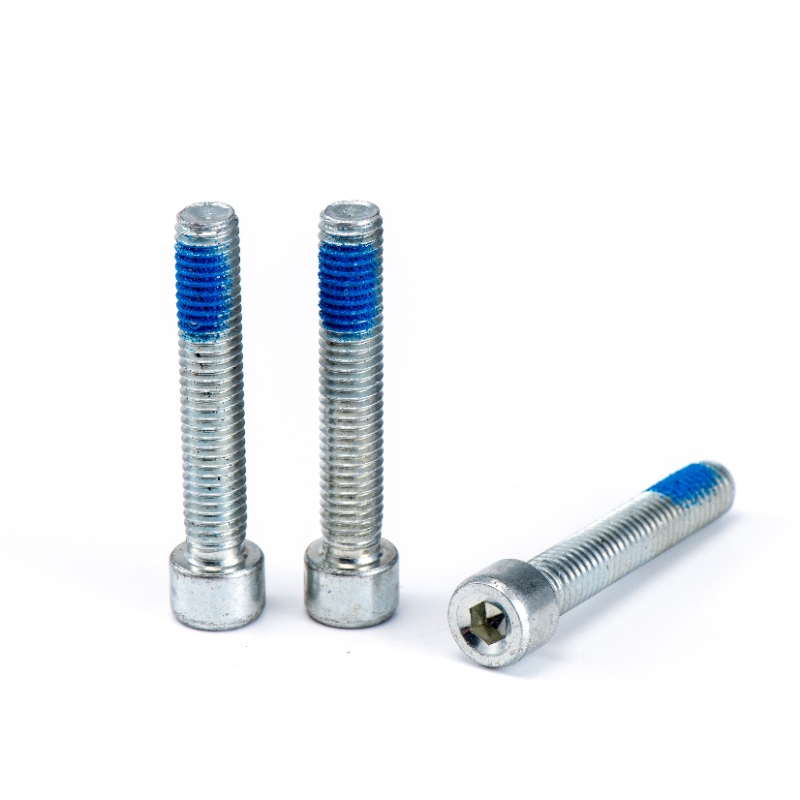Cup Head Hexagon Socket Screws: Technical Overview and Applications
Cup Head Hexagon Socket Screws, also known as hex socket cap screws or Allen cap screws, are precision Fasteners characterized by their cylindrical head with a hexagonal socket drive. These screws combine the high torque capability of hex socket drives with the smooth bearing surface of cup heads, making them ideal for applications requiring both mechanical strength and aesthetic finish.

Key Technical Characteristics
Material Composition: Typically manufactured from alloy steel (Grade 8.8, 10.9, or 12.9) with tensile strengths ranging from 800 MPa to 1,200 MPa, or stainless steel (A2/A4) with corrosion resistance up to 1,000 hours in salt spray tests.
Head Dimensions: Cup head diameter ranges from 1.5× to 2× the nominal screw diameter (e.g., M6 screw has 9-12mm head diameter), with a height approximately 0.6× the diameter.
Drive System: Hex socket sizes correspond to 60-70% of the nominal diameter (e.g., M6 uses 5mm Allen key), allowing torque transmission up to 90% of the screw's proof load.
Thread Specifications: Available in metric coarse (ISO 898-1) and fine threads, with pitch tolerances of ±0.025mm for precision applications.
Surface Treatments: Common options include zinc plating (5-15µm thickness), black oxide (reducing reflectivity by 85%), or Dacromet coating providing 1,000+ hours of corrosion protection.
Performance Advantages
The unique design offers several mechanical benefits:
Torque Efficiency: Hex socket drive transmits 30-40% more torque compared to Phillips drives of equivalent size
Flush Mounting: Cup head design provides 360° bearing surface contact while maintaining low profile
Vibration Resistance: Properly torqued screws exhibit 50% less loosening under vibration than standard hex heads
Precision Alignment: Concentricity tolerance of 0.05mm ensures accurate component positioning
Industrial Applications
These screws find extensive use across industries requiring reliable, high-strength fastening:
1. Precision Machinery
In CNC equipment (positioning accuracy ±0.01mm) and robotic arms, where vibration resistance and precise alignment are critical. The flush head design prevents interference with moving parts while maintaining 95% of the theoretical clamping force.
2. Aerospace Components
For aircraft interior panels and avionics mounting, utilizing titanium alloys with tensile strength up to 1,000 MPa and weight savings of 40% versus steel equivalents. Special low-profile versions meet FAA AC 20-107B compliance for reduced airflow disruption.
3. Automotive Engineering
In high-performance engines (withstanding temperatures up to 300°C) and suspension systems, where Grade 12.9 screws provide fatigue life exceeding 500,000 cycles at 90% of yield strength.
4. Medical Equipment
For MRI machines and surgical robots, using non-magnetic A4 stainless steel with ≤0.005% magnetic permeability. Electropolished finishes achieve surface roughness below Ra 0.2µm for cleanroom compatibility.
5. Renewable Energy Systems
In wind turbine gearboxes, where specially coated screws resist fretting corrosion under 108 load cycles, with torque retention >85% after 5 years of service.
Maintenance and Care Procedures
Installation Best Practices
Use calibrated torque wrenches with ±3% accuracy, applying 75-80% of the screw's proof load
For stainless steel fasteners, apply nickel-based anti-seize compound (0.05-0.1mm thickness) to prevent galling
Maintain perpendicular alignment within 2° to prevent socket rounding
Preventive Maintenance
Inspect socket integrity every 5,000 operating hours using go/no-go gauges
For critical applications, perform ultrasonic tension measurement to verify 90-110% of target preload
Re-torque after 100 thermal cycles in environments with >50°C variation
Corrosion Prevention
For coastal installations, apply wax-based protectants with >90% water displacement capability annually
Replace zinc-plated screws every 3-5 years in chloride-rich environments
Use eddy current testing to detect >0.1mm cracks in high-cycle applications
Lubrication Requirements
Molybdenum disulfide grease (NLGI #2) for temperatures between -30°C to 150°C
PTFE-based dry lubricants for cleanroom environments (≤ISO Class 5)
Reapply lubricant every 2 years or 10,000 operating hours





